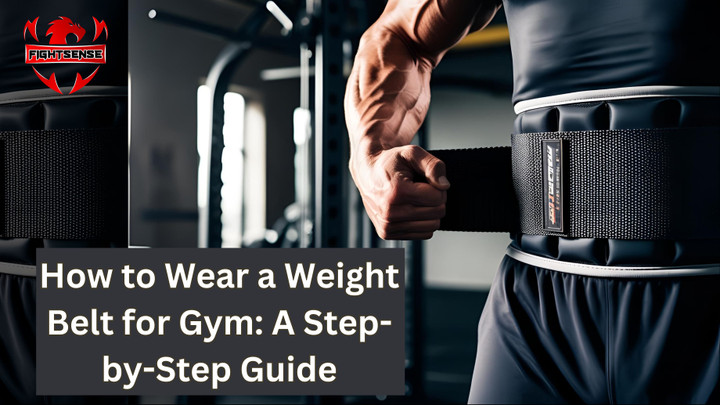How to Wear a Weight Belt for Gym: A Step-by-Step Guide
8th Mar 2025
Many gym-goers use a weight belt to support their lower back and keep their core intact while raising big weights. Still, it's not always as straightforward as it seems to be wearing a weight belt to the gym. A belt worn incorrectly could become less useful or perhaps dangerous. This post will walk over proper weight belt use techniques, benefits, and how to maximize it while working out.
Key Highlight:
-
Sit so the belt covers your lower back and abdomen somewhere above your hips.
-
Make sure it's snug enough yet allows unrestricted deep breathing.
-
Applied for big lifts: Only the belt is worn during high-intensity movements like deadlifts and squats.
-
Give technique top attention; steer clear of depending just on the belt and focus on good form.
-
During big lifts, use the belt merely for extra safety and stability.
What is a weight belt?
One piece of equipment designed to help and stabilize your lower back and core during heavy lifting is a weight belt for the gym. Often calling for it to minimize risk of injury and improve performance are exercises include squats, deadlifts, and overhead presses.
Why should we be wearing a weight belt?
The belt lightens your lower back load and helps increase intra-abdominal pressure, therefore stabilizing your spine. It helps you to have good posture, thereby allowing you a neutral spine during large lifts. During high-intensity workouts, stability of your core will help to prevent too much strain on your lower back.
How to Wear a Weight Belt for Gym: Step-by-Step
1. Select a belt fit for you.
Choose initially and most critically a weight belt suitable for your waist size. A belt that is too loose will not provide the support you need, even if one too tight may obstruct circulation or breathing. To acquire the best fit, make sure the belt is snug but not painfully tight.
2. Changing the Belts' Position
Just over your hip bones, around your waist, make sure the belt runs over your torso. The belt should cover your lower back and abdomen if you want best support.
3. tighten the belt firmly. Clear
After your lower back is in correct alignment, tighten the belt to provide substantial support for it. Try for a close fit that allows you to inhale deeply yet still feels sturdy enough to support your core during huge lifts.
4. Avoid tightening too forcefully.
Though the belt should be tight, try not to overdo it. For you, exercises should still be free from constraint. Belt over-tightening might limit your mobility and compromise lifting performance.
5. When should one belt?
Use your weight belt specifically for deadlifts, squats, or overhead presses—hard lifting motions. For easier workouts, you can skip the belt and depend on natural core involvement.
Advantages of a weight belt
-
One benefits from gymming with a weight belt in several ways.
-
During big lifts, a well worn weight belt supports your core and helps your lower back from under too much strain.
-
Correct posture and alignment can be promoted using a weight belt, therefore reducing the likelihood of damage.
-
Wearing a belt helps many lifters feel more confident lifting more weight, so improving their total performance.
Shop Now !
Conclusion
Wearing a weight belt for gym helps you maximize your safety and performance during lifting. Make sure the belt fits properly and is worn during the relevant activities if you want best outcomes. Proper weight belt use will help you reduce your injury risk and reach lifting goals. Always be very conscious of your body; if you are unsure about how to use the belt, visit a fitness instructor.
Disclaimer:
The information of this page is provided for general guidance on weight belt wearing for gym use. It cannot replace professional fitness advice. Always consult a certified trainer or healthcare professional before including a weight belt into your fitness program—especially if you have any pre-existing medical conditions or concerns. Reducing the possibility of harm always depends on providing correct form and technique first importance.
FAQ
-
Does every type of workout call for a weight belt?
Not every exercise calls for wearing a weight belt. Save it for deadlifts, squats, or overhead presses involving considerable heavy lifting for difficult lifts.
-
A weight belt should be just how tight?
The belt should be just right to support your core without restricting your breathing or movement. Try for a close fit even though it is not so tight that it would be uncomfortable.
-
Should one use a weight belt for security always?
No, for any exercise you shouldn't rely simply on a weight belt. It is meant for usage in specific situations calling for more central support.
-
Does the deadlift call for a weight belt?
Deadlifts especially in circumstances of heavy weight lifting can profit from a weight belt. It reduces the strain on your lower back and helps your core becoming more steady.

